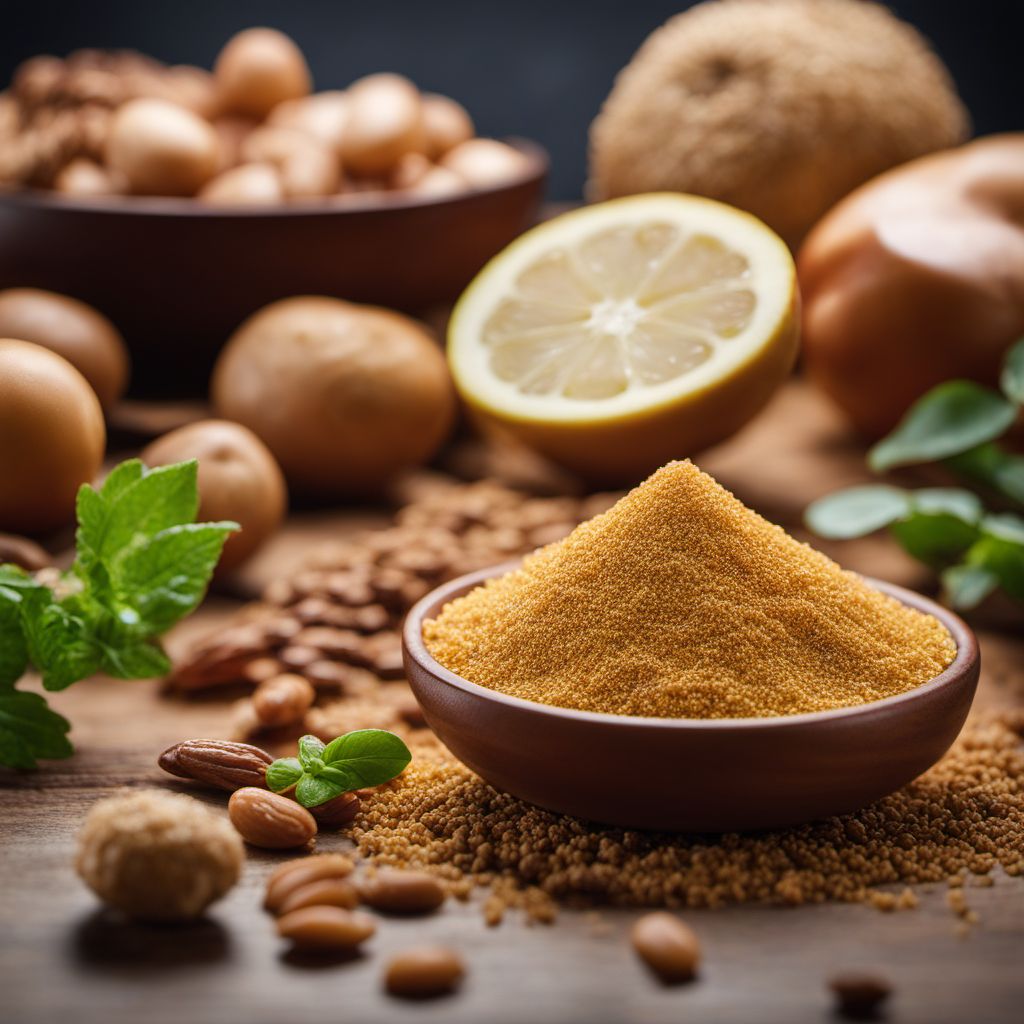
Ingredient
Food for weight reduction
The Healthy Path: Food for Weight Reduction
Food for weight reduction encompasses a wide range of ingredients, including fruits, vegetables, lean proteins, whole grains, and legumes. These ingredients are typically low in calories, high in fiber, and packed with essential vitamins and minerals. Incorporating these foods into a balanced diet can support weight loss efforts and promote overall health and well-being.
Origins and history
The concept of using specific foods for weight reduction has been around for centuries, with various cultures recognizing the importance of certain ingredients in maintaining a healthy weight. Today, there is a wealth of scientific research supporting the role of these foods in weight management and overall health.
Nutritional information
Food for weight reduction is typically low in calories and high in nutrients. These ingredients often provide essential vitamins, minerals, and dietary fiber while keeping calorie intake in check.
Allergens
There are no known allergens associated with food for weight reduction as it encompasses a wide range of ingredients.
How to select
When selecting food for weight reduction, opt for fresh, whole foods that are minimally processed. Choose fruits and vegetables that are firm, vibrant in color, and free from blemishes. For lean proteins, look for cuts with minimal visible fat. When selecting grains and legumes, opt for whole grains and dried legumes without added sugars or sodium.
Storage recommendations
To maintain the freshness and quality of food for weight reduction, proper storage is essential. Fruits and vegetables should be stored in the refrigerator, while grains, legumes, and lean proteins should be stored in a cool, dry place. It is important to follow specific storage guidelines for each ingredient to maximize shelf life.
How to produce
Growing or producing food for weight reduction can involve cultivating a vegetable garden, incorporating fruit trees or bushes, raising backyard chickens for lean protein, or even sprouting legumes and grains at home. These methods allow for greater control over the quality and freshness of the ingredients.
Preparation tips
Food for weight reduction can be prepared and used in a variety of ways. Fruits and vegetables can be enjoyed fresh, in salads, smoothies, or as healthy snacks. Lean proteins can be grilled, baked, or sautéed with minimal added fats. Whole grains can be cooked and used as a base for salads, stir-fries, or side dishes. Legumes can be cooked and added to soups, stews, or used as a meat substitute in various recipes.
Culinary uses
Food for weight reduction is incredibly versatile and can be used in a wide range of dishes. Fruits and vegetables can be incorporated into salads, stir-fries, soups, or used as toppings for yogurt or oatmeal. Lean proteins can be enjoyed as the main course or added to salads, sandwiches, or wraps. Whole grains can be used as a base for grain bowls, pilafs, or as a side dish. Legumes can be used in vegetarian or vegan recipes, such as bean burgers, hummus, or lentil soups.
Availability
Food for weight reduction is commonly available in most regions and countries. Fruits, vegetables, lean proteins, whole grains, and legumes can be found in grocery stores, supermarkets, farmers markets, and even grown in home gardens.

